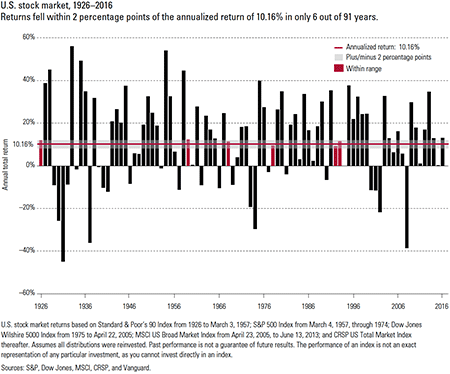Tariffs, trade wars, interest rate hikes, the Facebook data scandal, the omnibus spending bill…Today’s headlines are filled with market turmoil and it appears that everyone is tuning in. The question many investors are asking is “Should I be concerned and if so what should I do about it?”
The market is volatile, there’s no doubt about that. Volatility is normal, it is to be expected. The challenge that many investors face is that they are bombarded on all fronts by stories, opinions and so called expert recommendations. In today’s on-demand era, “wait and see” can be a frustrating tactic. Yet consider it this way: Markets discount widely-known information. Expectations for $60 billion in tariffs and corresponding retaliation from China are probably baked into prices now. If Thursday’s volatility is any guide, investors are generally unhappy with this possibility. But as markets look forward, they move most on the gap between expectations and reality. Compared to what people evidently fear today, even watered-down tariffs would be a positive surprise. Heck, even simple math might be a positive surprise: $60 billion amounts to just 2% of total 2017 imports. That’s not a lot. If China retaliates in kind, they would apply further tariffs to just 2.6% of the US’s total 2017 exports which is also not a lot. Seems to us like there is a lot of room for negative sentiment to catch up to a more benign reality.
Most people are long term investors who are targeting a specific rate of return based on their individual goals. What people often forget is that when targeting an annualized rate of return you will have vast differences in year over year returns. In fact, there are few years when either stocks or bonds delivered returns that are even close to the market averages.
To illustrate this point, between 1926 to 2016 the annualized return for U.S. stocks was 10.16%. During that time returns fell within 2 percentage points of the annualized return of 10.16% in only 6 of the 91 years.

When considering the U.S. bond market, between 1926 to 2016 the annualized return for the U.S. bond market was 5.37%. During that time returns fell within 2 percentage points of the annualized return of 5.37% in 24 out of 91 years.
Financial markets, particularly stocks are inherently volatile over the short term, as we are once again experiencing.
When we understand, and come to peace with this data, we can begin to understand equity volatility as a positive phenomenon, and in fact the reason for the premium return from equities. The term “volatility” refers to the relatively large and unpredictable movements of the equity market, both above and below its permanent uptrend line. Equities can, and frequently are, up over 20% one year and down 20% the next, and vice versa. However, if we accept that the long run returns of equities will approximate the past return, we begin to understand that these periods of downside volatility must likewise at some point be corrected by a period of upside volatility, greater than the long-term average of roughly 10% per year.
The premium returns of equities are, therefore, the efficient market’s way of pricing in adequate compensation for tolerating such unpredictability. Volatility is the reason equity investors are rewarded over time with premium returns, as long as we have the emotional strength to live through it. Volatility is not to be survived, it is to be embraced and thrived upon.
You Have a Plan
The very best investors have a disciplined approach to making portfolio decisions, and always stick to their plan, no matter what the rest of the world is doing. They are able to live through the peaks of euphoria, as well as the depths of terror, with a healthy understanding that a well-designed written investment and financial plan will get them through both.
No predictions. No witch doctor investment sorcery or magic investing formulas. No “Black Boxes.” Just hard work, patience and discipline.
market volatility stock market




